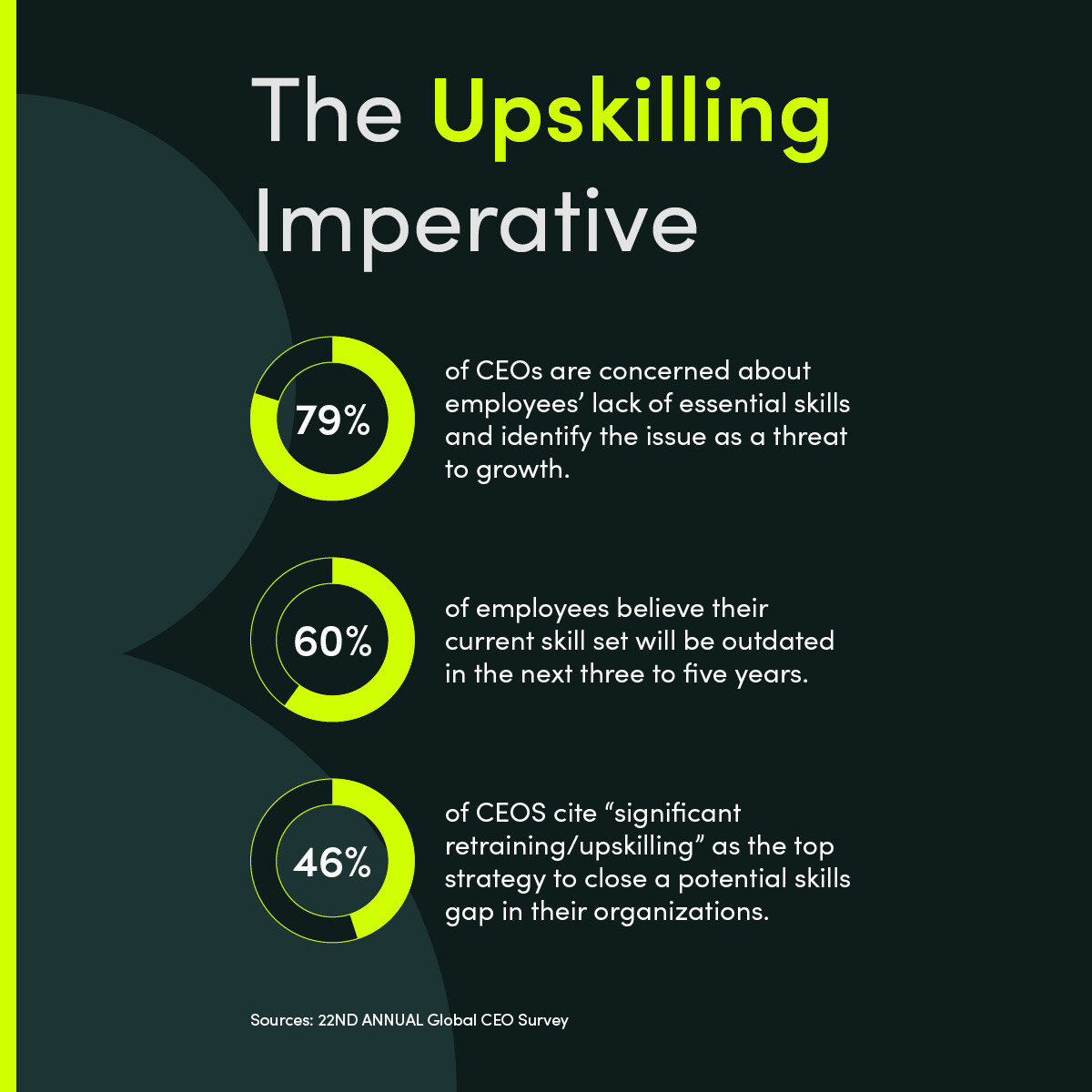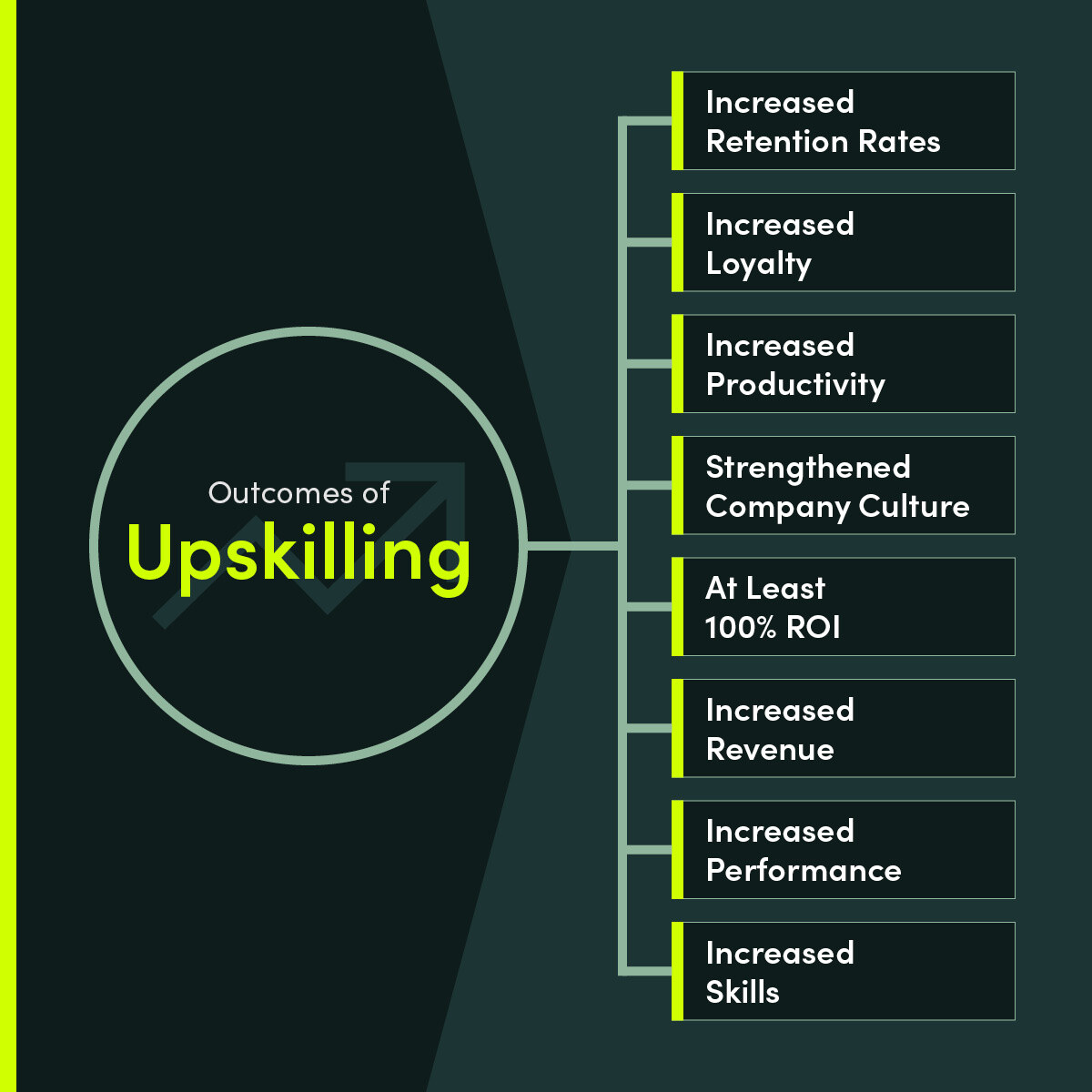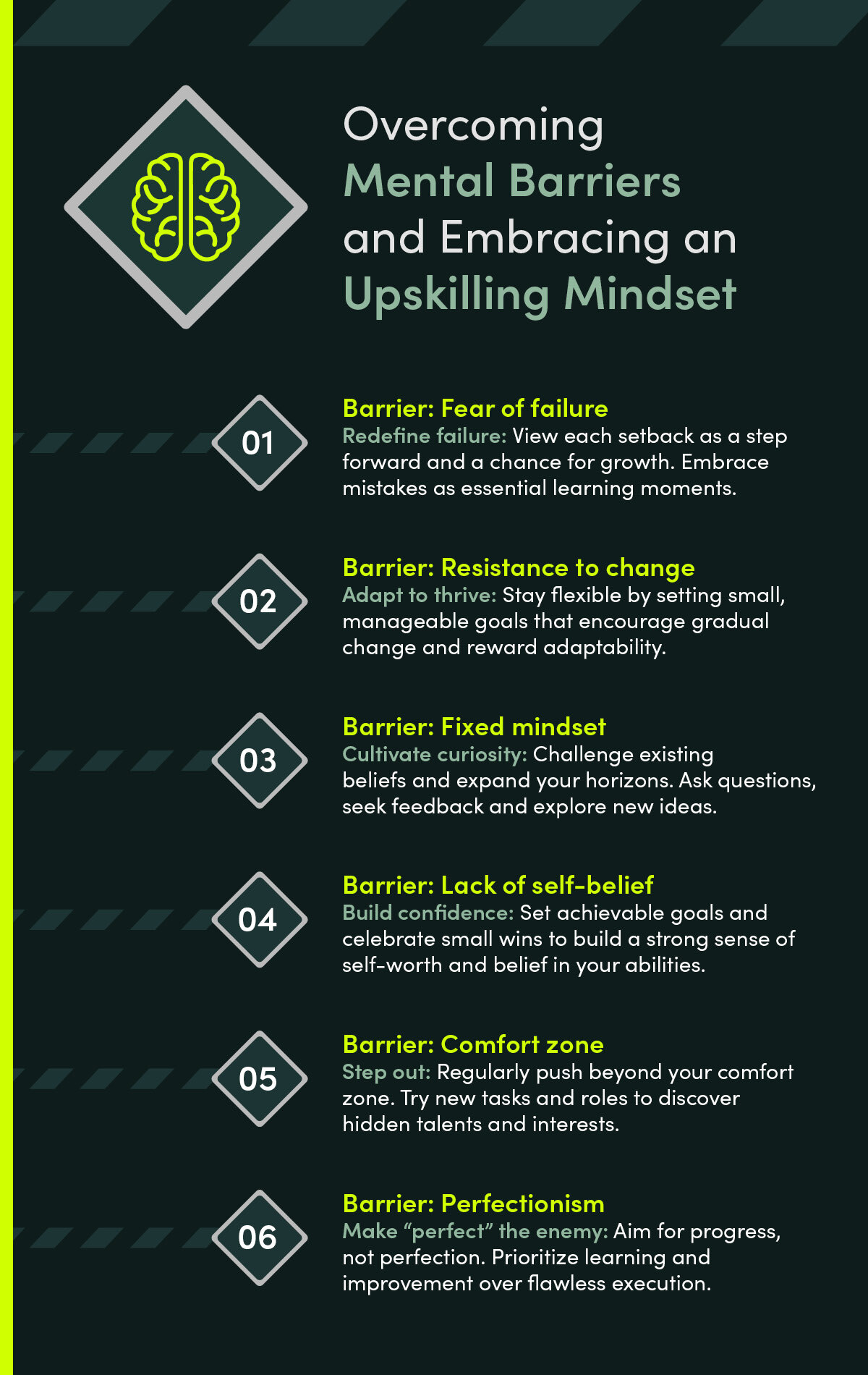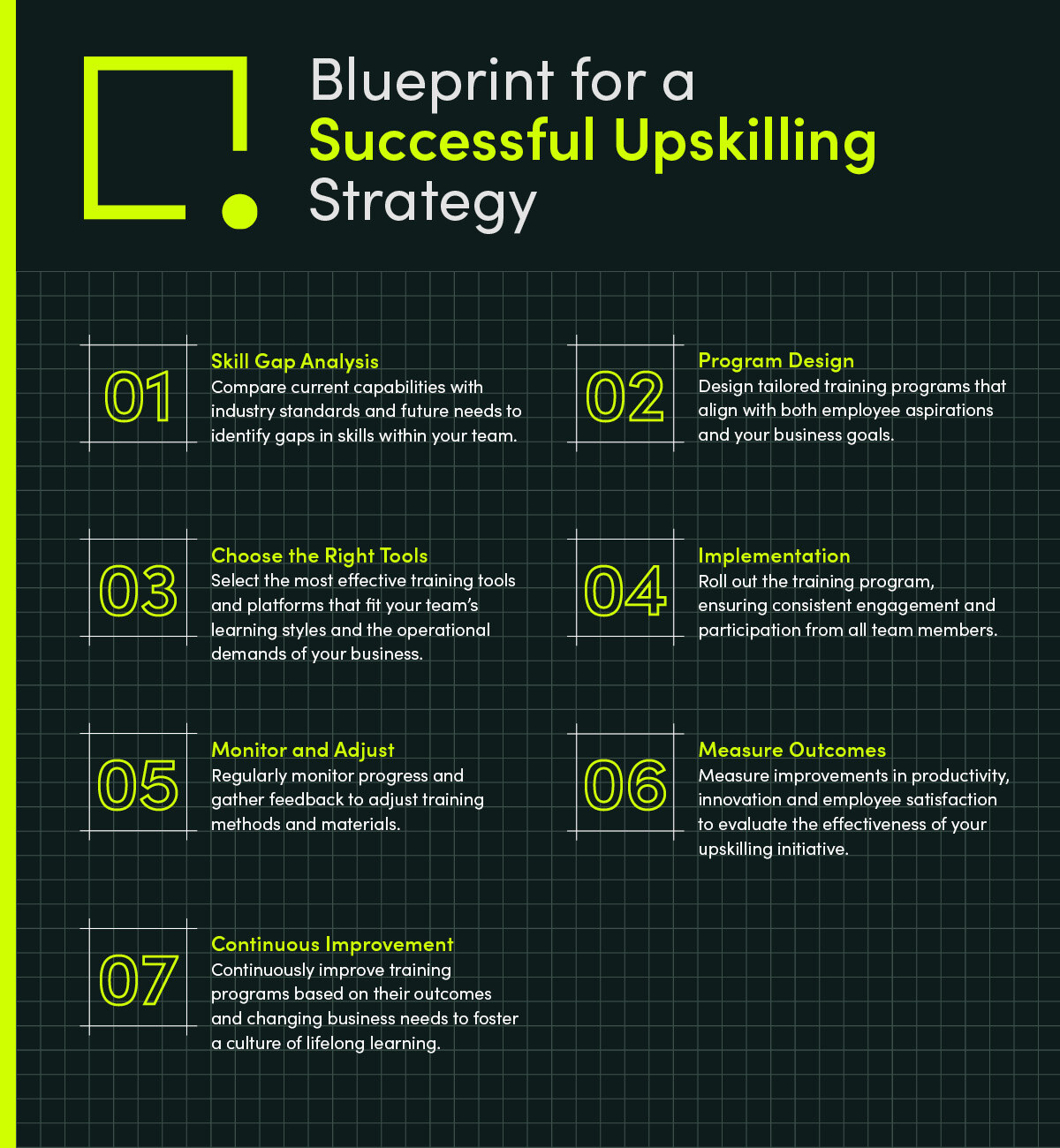Top 10 Digital Transformation Fails—and How to Sidestep Them
Discover how to sidestep the top 10 digital transformation fails with a step-by-step plan to integrate the right...
10 min read
By:
Cubeler en-ca
24-Apr-2024 5:21:42 PM

Find out how to transform every challenge into an opportunity through upskilling, ensuring the growth of your business in an ever-changing digital world.
In today’s fiercely competitive business landscape, the Darwinian principle of "survival of the fittest" resonates more profoundly than ever before.
For small businesses, this means not just competing with larger enterprises but also adapting swiftly to rapid technological changes and ever-evolving market dynamics. This is where upskilling—the process of learning new and enhanced skills that enable you to stay ahead of the curve in your current role—comes in.
Upskilling is not merely a choice. It's essential for small business owners aiming to survive and thrive in any cutthroat business environment.
By embracing a culture of learning and development, small businesses can transform challenges into new opportunities and broaden their horizons, ensuring their growth and relevance in an ever-changing marketplace.
In today's hyper-competitive economic environment, the marketplace is rapidly shaped and reshaped by unrelenting technological advancements, rampant globalization and ever-evolving consumer preferences.
Small businesses face a slew of unique challenges, namely intense competition from larger corporations, limited access to capital and the constant need to stay relevant in the face of changing market dynamics. The digital revolution has further heightened these challenges, compelling small businesses to innovate continually or risk obsolescence.
The concept of survival in such a demanding marketplace can be aptly understood through the lens of biological evolution. Just as species in nature must adapt to their ever-changing environment to avoid extinction, businesses must also evolve to meet the demands of their ecosystem.
Change is driven by the imperative to survive and thrive
Business evolution often requires enhancements in skills and capabilities. For small businesses, this could mean adopting new technologies, diversifying product lines or improving customer service strategies.
Adaptation in business, like biological evolution, is driven by the imperative to survive and thrive. It's not merely about responding to changes after they occur but anticipating shifts and proactively preparing for them.
In biology, this might manifest as a species developing thicker fur in response to colder climates—in business, this could translate into companies investing in data analytics to better understand consumer behaviour trends before they become apparent in their sales numbers.
Ultimately, the need for business upskilling must operate on two primary levels:
Continual upskilling is an existential imperative
In the biological realm, the failure to adapt can lead to the extinction of a species. In business, this failure translates into bankruptcy or irrelevance.
The competitive forces of the marketplace act much like natural selection in evolution. They filter out businesses that are unable to adapt their skills and operations to the current environment.

Continual upskilling is not just a strategic move—it's an existential one.
The evolutionary imperative in business underscores the necessity of perpetual adaptation and skills enhancement. For small businesses aiming to carve out or maintain their niche in the modern marketplace, embracing this evolutionary approach is not just beneficial—it's critical for survival.
Just as in nature, where evolution favours species best adapted to their environments, the marketplace rewards businesses that can skillfully navigate its complexities and constant shifts.
The need for upskilling has not been lost on the legions of Canadian small businesses struggling to survive and thrive. For forward-thinking small business owners, upskilling is now emerging as a potent form of rebellion against the entrenched giants of industry.
For small companies, this concept transcends the basic acquisition of new skills—it symbolizes a strategic uprising against established, larger competitors. By embracing a culture of continuous learning, small enterprises are not just staying relevant. They are also actively disrupting markets and challenging the long-standing status quo.
For small business owners, upskilling should be seen not just as a necessity, but as a strategic weapon. It is an opportunity to break away from traditional business models and foster a culture that embraces rapid adaptation and innovation. This approach is especially crucial in industries dominated by a few large players.
Upskilling is a mindset of resilience and proactive growth
In near-monopolistic environments, where very few companies offer competing products or services, the agility facilitated by upskilling becomes a significant competitive advantage, enabling smaller businesses to outmaneuver larger, less agile competitors.
The benefits of upskilling do not stop there. Continuous learning fuels innovation, which is the cornerstone of competitive differentiation.
Small businesses, often more nimble and less bound by cumbersome bureaucracies, can quickly implement innovative ideas and transform these into products or services, effectively altering market dynamics. This capability allows them to seize opportunities that bigger companies might miss or respond too slowly to capitalize on.
Encouraging small business owners to invest in upskilling also means promoting a mindset of resilience and proactive growth. In today's rapidly changing market landscape, where technological advancements and consumer preferences evolve at an unprecedented pace, the ability to adapt quickly is invaluable.
Upskilling not only enhances the skill set within the company but also imbues the entire organization with a forward-thinking ethos necessary for sustained success.
Upskilling turns small businesses into formidable competitors
Agility and innovation, fostered by a commitment to continuous learning, do more than just level the playing field. They also turn small businesses into formidable competitors capable of pioneering new trends and capturing market share.
This dynamic is vividly illustrated in sectors like tech startups, where small teams frequently disrupt established markets with groundbreaking technology and business models.
Every day, the upskilling rebellion is becoming more than a mere survival tactic. It is evolving into a deliberate offensive strategy in the corporate world. Small businesses that adopt this approach can redefine their trajectories and emerge as market leaders.

By challenging conventional norms and continuously evolving through upskilling, small enterprises do not just survive—they thrive, paving the way for a new era of market dynamics where agility and innovation hold the keys to success.
Small business owners often encounter significant mental barriers on the path to upskilling. Here are the six primary barriers:
These psychological hurdles can stagnate the growth of their business and hinder the proactive attitude they need to fight for every inch of territory in today’s competitive market.
To overcome these challenges, it is crucial for business owners to adopt a growth mindset rooted in the belief that challenges are opportunities rather than insurmountable obstacles. Here are practical steps that small business owners can take to foster this mindset:

Upskilling is an ongoing journey, not a one-time event
The transformation into a learning organization should be seen as an ongoing journey, not a one-time event.
Navigating the psychological complexities of change and positioning your business for long-term success is a long-term commitment to growth and learning.
By cultivating an environment where upskilling is part of the daily routine, small businesses can not only adapt to the demands of the modern marketplace but can also thrive within this setting.
Developing and implementing an effective upskilling strategy is pivotal for small businesses aiming to remain competitive and innovative.
Here are actionable steps to guide you, as a small business owner, through this process:
By following these steps, small business leaders like you can develop a solid upskilling strategy that both enhances the skills of your employees and drives business growth.

Effective leadership, combined with the right tools and a supportive culture, can transform the challenge of upskilling into a strategic advantage.
Because upskilling is more a journey than a destination, ensuring that your upskilling initiatives deliver tangible benefits over the long term is a pit stop you need to make from time to time.
Establishing strict methods for measuring the effectiveness of your upskilling initiatives is crucial—particularly when it comes to demonstrating the value of investing in employee development and guiding your future training efforts.
Here are the most effective ways to measure the impact of your upskilling initiatives.
Develop Key Performance Indicators (KPIs)
The most essential KPIs for gauging the success of your upskilling programs include employee productivity, engagement and turnover rates.
Use Pre- and Post-Training Assessments
To directly measure how much you have enhanced the skills of your employees, assess their skill levels before and after their training sessions. This can help you determine the immediate impact of upskilling on your employees. Furthermore, continuous assessments over time can track long-term skill retention and application on the job.
Analyze Return on Investment (ROI)
Calculating the ROI of upskilling efforts involves comparing the cost of training (including material, time and downtime costs) against the actual benefits you derived from the effort (such as increased revenue, reduced operational costs from improved efficiency and decreased hiring costs from lower turnover).
Gather Qualitative Feedback
Beyond quantitative measures, qualitative feedback from employees can provide deeper insights into the impact of your upskilling initiatives.
Regular focus groups, one-on-one interviews and open forums can help you gather in-depth opinions and suggestions, feedback you need to fully understand the real-world application of your upskilling efforts and identify areas for improvement in future training sessions.
Monitor Industry Benchmarks
Comparing the performance of your business against industry benchmarks post-upskilling can offer you a broader perspective on its effectiveness. Understanding where your business stands relative to your peers can help you clearly see the competitive advantages you gain through training and the upskilling areas you must develop further develop.
By systematically evaluating the impact of upskilling with these methods, small businesses can optimize their training programs, enhance employee capabilities and drive stronger business performance.
This continuous cycle of development and assessment ensures that your upskilling efforts remain aligned with your strategic business goals and today’s market dynamics.
Strategic upskilling has proven to be a game-changer for many Canadian small businesses. Here are inspiring case studies that illustrate this transformation.
Exploring these real-life examples can provide you with critical insights into how organizations have effectively leveraged upskilling to steer through changes in their industries.
Revitalizing Traditional Industries Through Technology
Overcoming Skill Gaps in Healthcare
Adapting to Digital Market Dynamics
Sustainable Innovation in Manufacturing
Culinary Excellence Through Upskilling
These stories underscore the power of strategic upskilling in driving business growth and leading the market.
For Canadian small business owners, investing in upskilling is not just about keeping up with industry standards but about pushing the boundaries of what their businesses can achieve.
Understanding future trends in workforce development is crucial for small businesses aiming to stay competitive. Here are the key trends and strategies to consider.
Technological Integration
Continuation of Remote Work
Importance of Skills Forecasting
Global Economic Changes
By proactively adapting to these trends and prioritizing strategic training, small businesses can enhance their agility and resilience, ensuring their growth and sustainability in a rapidly changing economic landscape.
Quick Takeaways

Discover how to sidestep the top 10 digital transformation fails with a step-by-step plan to integrate the right...

Get a summer SME toolkit to transform your talent challenges into opportunities for growth in a tight labour market.

Find out what you need to know to bypass the most common marketing pitfalls.